

|
Soundclip:
|
| See Steve's Hand-Written Solo
Transcription |
|
Steve Khan's solo on: "C. & D."(Ornette Coleman) On "GOT MY MENTAL"(Evidence)(1997), I recorded "R.P.D.D." (Relation of the Poet to Day Dreaming) from the brilliant 1962 Ornette Coleman album titled, "ORNETTE!"(Atlantic). Now, on this new album, I have decided to interpret two more tunes from that very same album. 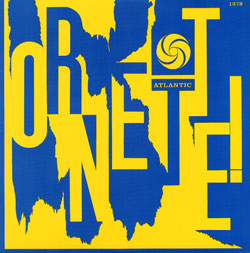 The first of those two tunes became "C. & D." (Civilization and its Discontents), and there are those, amongst his fans, who have referred to Ornette's album as the 'alphabet album' or the 'initials album' but, the titles were all derived from the works of Sigmund Freud. On Coleman's original version, he was surrounded by some of his usual compatriots: Don Cherry(Trumpet), Ed Blackwell(Drums), and this time, the great virtuoso, Scott LaFaro(Acoustic Bass). As an arranger, attempting to transform anything by Ornette Coleman is a daunting task. But, to somehow see if the piece can fit into Latin rhythms and a Latin context? Well, that's another matter entirely. My demo was originally conceived of from the rhythmic perspective of being played completely as a songo. That concept only went so far, and when the group convened for our one rehearsal, only the montuno for the Intro and the eventual timbal solo would survive with that kind of groove, the rest of the piece was to be played as a son montuno. In the end, where most of these pivotal issues are concerned my sense of trust in Marc Quiñones(timbal) and Bobby Allende(conga) is paramount. In the sequence of "PATCHWORK," "C. & D." becomes the first vehicle for a guest artist. I was so fortunate to have the presence of the warm, wonderful, swingin' and creative tenor sax voice of Bob Mintzer. To again have Bob join us was a complete and total joy. Playing melodies and ensembles with Bob has always been great for me, and a master class in phrasing. The first of those two tunes became "C. & D." (Civilization and its Discontents), and there are those, amongst his fans, who have referred to Ornette's album as the 'alphabet album' or the 'initials album' but, the titles were all derived from the works of Sigmund Freud. On Coleman's original version, he was surrounded by some of his usual compatriots: Don Cherry(Trumpet), Ed Blackwell(Drums), and this time, the great virtuoso, Scott LaFaro(Acoustic Bass). As an arranger, attempting to transform anything by Ornette Coleman is a daunting task. But, to somehow see if the piece can fit into Latin rhythms and a Latin context? Well, that's another matter entirely. My demo was originally conceived of from the rhythmic perspective of being played completely as a songo. That concept only went so far, and when the group convened for our one rehearsal, only the montuno for the Intro and the eventual timbal solo would survive with that kind of groove, the rest of the piece was to be played as a son montuno. In the end, where most of these pivotal issues are concerned my sense of trust in Marc Quiñones(timbal) and Bobby Allende(conga) is paramount. In the sequence of "PATCHWORK," "C. & D." becomes the first vehicle for a guest artist. I was so fortunate to have the presence of the warm, wonderful, swingin' and creative tenor sax voice of Bob Mintzer. To again have Bob join us was a complete and total joy. Playing melodies and ensembles with Bob has always been great for me, and a master class in phrasing.After transcribing the melody, I had to see just how it was going to lay on the guitar, given the wide range that this melody covers. I was especially worried about the [A] sections. To tell you all the truth, I was uncertain right up until the last moments before mixing that I had done the right thing. The first few melody notes are so high up on the neck of the guitar that I was worried that they would not sound full-bodied enough, and that they would not blend well with Bob Mintzer's beautiful tenor sax sound. 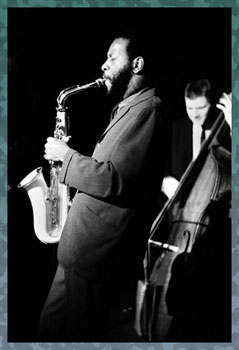 It took some time, but I have come to feel that, at the very least, this sounds O.K. to me. It is interesting to note that, on the original version, Ornette improvised two very different [B] sections for the melody, and I decided that they would both be presented as part of my arrangement. As I continued to craft the arrangement, it became apparent to me that Rob Mounsey's keyboard was going to become the glue to everything, as he would supply the various montunos and rhythmic punctuations that would keep this complex arrangement moving forward. You can view the KEYBOARD LEAD SHEETS via this link. The montuno in the Intro became most interesting and perplexing at the same time. Because the sonority of Bb7(13b9) became so pivotal as a punctuation, I tried to break-up its core voices into 2-notes, one in the left hand/one in the right hand, in order to come-up with something harmonically unique. As I wrestled with this section, I never doubted for a moment that a Bb in the bass would sound great and cover everything. Oh how very wrong I was to be. When I finally felt ready to add the bass to my demo, Bb, no matter where I placed it, sounded awful to me. And so, of all things, the bass part would feature an emphasis around Db, while passing through: E-G-Ab. Not a Bb in sight or within earshot!!! Finally, as has become a bit of a tradition for me on these recent recordings, prior to Bob's solo there is a Soli based upon reorganized fragments transcribed from Ornette's original solo, and performed by Bob, Rubén Rodríguez and yours truly. It took some time, but I have come to feel that, at the very least, this sounds O.K. to me. It is interesting to note that, on the original version, Ornette improvised two very different [B] sections for the melody, and I decided that they would both be presented as part of my arrangement. As I continued to craft the arrangement, it became apparent to me that Rob Mounsey's keyboard was going to become the glue to everything, as he would supply the various montunos and rhythmic punctuations that would keep this complex arrangement moving forward. You can view the KEYBOARD LEAD SHEETS via this link. The montuno in the Intro became most interesting and perplexing at the same time. Because the sonority of Bb7(13b9) became so pivotal as a punctuation, I tried to break-up its core voices into 2-notes, one in the left hand/one in the right hand, in order to come-up with something harmonically unique. As I wrestled with this section, I never doubted for a moment that a Bb in the bass would sound great and cover everything. Oh how very wrong I was to be. When I finally felt ready to add the bass to my demo, Bb, no matter where I placed it, sounded awful to me. And so, of all things, the bass part would feature an emphasis around Db, while passing through: E-G-Ab. Not a Bb in sight or within earshot!!! Finally, as has become a bit of a tradition for me on these recent recordings, prior to Bob's solo there is a Soli based upon reorganized fragments transcribed from Ornette's original solo, and performed by Bob, Rubén Rodríguez and yours truly.One of the last, but obviously most crucial aspects to tackle is the solo changes and the format. With Ornette's marvelously mystifying harmolodic style of improvising, the 'changes' that might have been suggested during the melody can come into play via the bass, in this case on the original version you had the presence of the brilliant Scott LaFaro, so I can always investigate what he was hearing, but usually, I base my sense of what the solo changes are going to be upon my own sense of what was going on during the melody. Like many of Ornette's great tunes, "C. & D." has a classic A-A-B-A form. To put that in a Latin rhythmical context, 32-bars will, of course, function perfectly well. So now, I had to decide what would make-up my basic [A] section. When listening to Ornette's melody I could hear a lot of Bb7 and Eb7, but then, other strange things began to happen as his melody went along a path of its own. So, I decided to try and preserve some of that implied chordal motion, while making up my own changes where, for each letter [A]. bars 7-8 would vary depending upon where the coming section was to land. As I laid out the overall structure of the arrangement, I knew that I wanted there to be 3 choruses each for Bob and for me. Though timbalero Marc Quiñones and I might not agree on just how it gets done, I'm certain that we both feel that a solo section must build and have a dynamic shape to it. Over the run of these 4 albums, where we know that we're going to have the big presence of a great drummer like Dennis Chambers, the question becomes, from the perspective of the timbal, how do we build the solo over 3 choruses. For me, the answer has become simple. From the timbal in each chorus, you would have the following construction to build the solos: Chorus 2: [A] cáscara [A2] cáscara [B] mambo bell - Dennis: ride cymbal, with the campana added [A3] mambo bell - Dennis: ride cymbal Chorus 3: Marc stays on the mambo bell and Dennis stays on the ride cymbal all the way! The approach to soloing or improvising surely varies per person, per group, per the song, per philosophy. Any number of ways, methods or thought processes could be in play. In a more traditional Jazz setting where one solo can dissolve into the next, picking-up on the last phrase that the prior soloist played is always effective, and very musical. This was certainly one of countless great things about the Miles Davis Quintet of the mid-'60s. With an arrangement like this, for Ornette Coleman's "C. & D." the flow of the piece is not like that, Bob Mintzer's solo ends on an arranged break, then we have some rhythm, and an avanico from Marc leading me into Chorus 1. So here, I chose to play a rhythmic paraphrase of Ornette's opening melody. As there is now a structure and a set of chord changes, there is something to observe, or perhaps not. Like most of the tunes that I have interpreted over the course of the recent albums since 2005, and before, I like the feeling of two moving lines, bass and whatever the soloist happens to be - not just because it's an Ornette Coleman tune. Over the Bb7 chord in bar 1, I am alluding to 7(13b9) sounds, and in bar 2, over the Eb7 chord, I am referencing 7(9b5) sounds. In bars 3-4 over the Ab7 chord, I begin by playing notes from the b5 sub, D7(9), and then when I actually observe the true chord, it almost doesn't even sound as consonant as it should. Bars 5-6, over A7, I am again referencing melodic material from the tune, but with different pitches that lead me to 7(b5b9) sounds via an Eb triad(Bb-G-Eb) in bar 6. In bar 7, over Cm7, I am playing D minor pentatonic [D, F, G, A, C], and in bar 8 over the F7(alt.) chord, I am playing Eb minor pentatonic [Eb, Gb, Ab, Bb, Db]. From a cerebral perspective, this gives you 3 of the 4 altered tones: b9(Gb)-#9(Ab)-#5(Db). I began [F2] with a chordal passage that is completely in character for the way that I have been playing. As I always seem to say, it is a style that is derived from the left-hand of both McCoy Tyner and Chick Corea. This chordal passage goes all the way through bar 6, and really features majestic sonorities that are all consonant. Bars 7-8 feature a sequence of common ii-Vs, but if you look at only the V7 chords, in this case F7 and Bb7, my lines reveal a sense of the b5 subs in both cases. 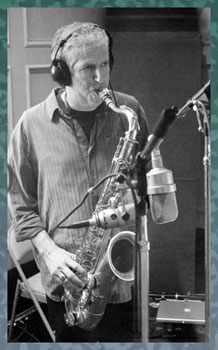 Over Cm7-F7, I am playing F# minor pentatonic [F#-A-B-C#-E], which is like making a ii-V of the b5 sub, as if it was F#m7-B7. In bar 8, over Fm7-Bb7, I am doing the same approach as if the chord change was Bm7-E7, and you could say that I am playing a bluesy B minor pentatonic [B, D, E, F#, A]. You have to keep in mind that I am headed to the first chord of the bridge section which is going to be Eb7. If you are always mindful of that, everything should make sense. Still and all, the only thing that matters is: "Does it sound good to you, the player?" Over Cm7-F7, I am playing F# minor pentatonic [F#-A-B-C#-E], which is like making a ii-V of the b5 sub, as if it was F#m7-B7. In bar 8, over Fm7-Bb7, I am doing the same approach as if the chord change was Bm7-E7, and you could say that I am playing a bluesy B minor pentatonic [B, D, E, F#, A]. You have to keep in mind that I am headed to the first chord of the bridge section which is going to be Eb7. If you are always mindful of that, everything should make sense. Still and all, the only thing that matters is: "Does it sound good to you, the player?"With arrival of [G] and Eb, it seems that the rhythms of Michael Brecker's great tune, "Song for Barry" had drifted into my spirit. Firstly, I am in the area of Bb minor pentatonic [Bb, Db, Eb, F, Ab] and then, in bar 2, ever so briefly, I pass through E7 using string-skipping and quickly returning to Eb7. Bars 3-4 over Bb7, I return to being consonant using just chord tones with a touch of chromaticism. As I am approaching the chord change to Gm7 in bar 5, before I get there I am taking a fairly traditional approach by playing in the mode of the chord 1/2-step above it. In this case that would be Abm7, and so the notes are from Ab Dorian[Ab, Bb, Cb, Db, Eb, F, Gb]. In bars 5-6, I am simply playing G minor pentatonic G, Bb, C, D, F]. For bars 7-8, I designed a different series of ii-Vs to get us back eventually to Bb7. In bar 7, we have Abm7-Db7, where I am using Ab Dorian, and in bar 8, over Cm7-F7, I am playing notes from the F altered dominant scale [F, Gb, Ab, A, B, Db. Eb]. A 4-bar chordal passage greets us as [F3] and Bb7 arrive. Over the Bb7, the voicings are more related to Fm7 and provide a broader harmonic feeling - at least to my ears. In bar 2, over the Eb7, these voicings are completely consonant. In bars 3-4, here I am using parallel harmony to accentuate the melodic voices on top that are consonant: Bb, C, Db, C, Bb, and they could be easily seen as part of Eb Dorian [Eb, F, G, Ab, Bb, C, Db]. If this is the way that you hear things, this will always sound great - if it's not? It is going to sound forced and not believable. With the arrival of A7 in bar 5, I am really playing in the area of the b5 sub, Eb7 with some chromaticism and string-skipping, leading to, in bar 6, a blues lick which you could say is derived from F# minor pentatonic. Notice how an A triad is right there amongst those notes! As this 1st chorus closes out, we have yet another series of ii-Vs to take us back to the top. In bar 7, over Cm7-F7, I am playing C Dorian [C, D, Eb, F, G, A, Bb]. In bar 8, over the F#m7-B7, a ii-V of the b5 sub, I revert to the 'inside' and play an F augmented triad: A-C#-F first before allowing F# minor pentatonic to lead me into a Bb blues lick and the start of the 2nd chorus. Chorus 2 begins with the aforementioned feeling of the blues in bars 1-2, and a high Db gently bent up. Bars 3-4 over the Ab7 sonority began with some consonant string-skipping going from F-Eb(E-string) to Ab-Gb(G-string), but then, I am playing in the b5 sub area of D7 using the D dominant 7th pentatonic [D, E, F#, A, C] without the E-natural. In bars 5-6, over A7, I first play the chord tones of that chord, and then I play almost the same motif, but down a 1/2-step outlining Ab7. In bars 7-8, the ii-V of Cm7-F7 reappears, and in bar 7 over the Cm7, I am just playing the blues in C with that Gb being the 'blue note.' Over the F7, I go to the b5 sub of B7, and I am playing out of the B dominant 7th pentatonic [B, C#, D#, F#, A]. This leads me back to Bb7 and [F2]. As this section begins, I am again, viewing it from a linear perspective, going a bit sideways, and over Bb7 you see and hear chord tones from E7, the b5 sub. Repeating myself, all of this cerebral stuff is complete nonsense UNLESS, this is the way that you hear things. This is the only thing that matters! Over the Ab7 in bars 3-4, I played a nice pull-off into a line that is really from Eb Dorian. When A7 appears in bars 5-6, just as the chords do, I go up a 1/2-step and I am now using E Dorian [E, F#, G, A, B, C#, D]. 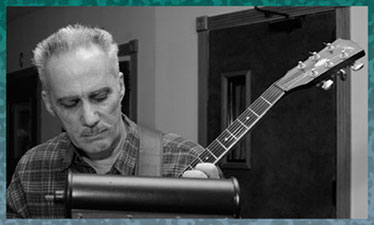 Notice the little phrasing mannerism on beat 1 of bar 5. These types of small details are so important to the character and flavor of your playing! For the ii-Vs in bars 7-8, my approach is completely pentatonic. Over Cm7-F7, I am playing G minor pentatonic [G, Bb, C, D, F]. And over the Fm7-Bb7, I am playing Db minor pentatonic [Db, Fb, Gb, Ab, Cb], which is the minor pentatonic built upon the #9 of Bb, and doing so gives you all 4 alterations: #9(Db), b5(E/Fb), #5(F#/Gb), b9(B-natural/Cb). This leads me into the bridge. Notice the little phrasing mannerism on beat 1 of bar 5. These types of small details are so important to the character and flavor of your playing! For the ii-Vs in bars 7-8, my approach is completely pentatonic. Over Cm7-F7, I am playing G minor pentatonic [G, Bb, C, D, F]. And over the Fm7-Bb7, I am playing Db minor pentatonic [Db, Fb, Gb, Ab, Cb], which is the minor pentatonic built upon the #9 of Bb, and doing so gives you all 4 alterations: #9(Db), b5(E/Fb), #5(F#/Gb), b9(B-natural/Cb). This leads me into the bridge.At [F2], we "take it to the bridge" and the IV7 chord, the feeling of the blues remains. Over the Eb7 chord, you could say that the notes are from Bb Dorian [Bb, C, D, Eb, F, G, Ab], especially because of the C-natural. But when I hit bars 3-4 and the I7 chord of Bb7, that E-natural in the bar is a pure 'blue note' from the Bb blues scale [Bb, Db, (D), Eb, E, F, Ab]. It is important to really think about the melodic notes in the solo, and not focus too much on the entrance of my Zawinul-esque Psychedelic Mini-Big Band via the Korg DVP-1 harmonizer, using Sound #16. Here the top voice is harmonized below by a m3rd [-3], m6th [-8], and a maj7th [-11] on the device. As we hit bars 5-6 and the Gm7 chord, single-notes return, and of interest is the presence of a B-natural (the maj3rd) as an upper neighbor to Bb, the more expected note. I used to hear Randy Brecker play the major 3rd on minor chords all the time, and find ways to make that note sound normal. It was wild, and I guess it has stayed with me. The ii-Vs in bars 7-8, Abm7-Db7 and Cm7-F7 are handled very much down the middle with chord tones more than chromaticism. As [F3] returns for the close of this Chorus 2, the DVP-1 is back as well, and this time, with a decidedly more Big Band-ish feel. When I hear the lines in bars 1-4, especially in 3-4, it feels like a full trumpet section to me. For bars 1-2 over Bb7, I was using Sound #18. Here the top voice is harmonized below by a 2nd [-2], p4th [-5], and the b7 [-10] for a bit of a parallel dominant 7(13) color. Then, for bars 3-4, over Ab7, I switched to Sound #42, a favorite of mine, and here the top voice is harmonized below by a m3rd [-3], p4th [-5], and a m6th [-8]. The melody notes are derived from the Ab blues scale [Ab, Cb, (C), Db, D, Eb, Gb]. In bars 5-6 over the A7 chord, once again I am playing completely sideways using Eb7, the b5 sub. Bars 7-8 see the superimpositions continuing, and over Cm7-F7, the line comes from Ab Dorian. Finally, in bar 8 over F#m7-B7, I have returned to playing very inside, relative to these changes, playing F# minor pentatonic. The bluesy feeling picks up as Chorus 3 begins with an accentuated vibrato on an Eb over the Bb7 chord. Over the Eb7 chord, I am again using Bb minor pentatonic. That kind of thinking continues in bars 3-4, as I am playing Eb minor pentatonic over the Ab7 chord. In bars 5-6 over the A7, I keep things very consonant by playing A dominant 7th pentatonic [A, B, C#, E, G]. In bars 7-8, I am using G minor pentatonic over Cm7 and then, Ab minor pentatonic over the F7 chord to pull us, via the line, back to Bb7. The R&B/Gospel oriented chords that I am playing as [F2] begins reminds me of a story from my first days in New York City. This was after I had finally found my first apartment here, on W. 92nd St. between West End Ave. and Riverside Dr. - it was in the basement. Believe it or not, I used to see Herbie Hancock walking his dog in the 'hood, my 'hood, all the time. Imagine that!!! I finally got the nerve to speak to him, and one day he came over to look at my Rhodes, and he even adjusted the tines for me. He also wanted to see the road cases that I had for it. Eventually, I actually gave him the road cases! But, while we were jamming on, of all things, "Canteloupe Island," I could hear that the way he was playing the basic vamp for the tune was very different than how I had grafted it on to the guitar. I had never realized, or better yet heard that, in F minor, he was keeping an F-natural on top throughout all the chordal movements. When I figured out how to do that on guitar, it changed everything for me. So, decades later, here I am in the middle of an Ornette tune, and suddenly those voicings, now played over Bb7 and Ab7 respectively, make their appearance. 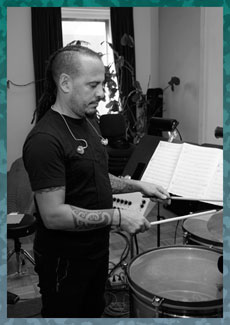 Over the A7, I go back to my characteristic McCoy stuff, but adding in 13b5 sounds in bar 6. During the transition bars 7-8 to the bridge over F#m7-B7 and Fm7-Bb7, I am playing the same voicing B7(13b9) with the root on top, and then taking it down a 1/2-step. When there is no other chordal instrument, you can guide and color the harmony however you like. It helps so much to have the support of a wonderful bassist like Rubén Rodríguez! Playing with him is a joy for me. Over the A7, I go back to my characteristic McCoy stuff, but adding in 13b5 sounds in bar 6. During the transition bars 7-8 to the bridge over F#m7-B7 and Fm7-Bb7, I am playing the same voicing B7(13b9) with the root on top, and then taking it down a 1/2-step. When there is no other chordal instrument, you can guide and color the harmony however you like. It helps so much to have the support of a wonderful bassist like Rubén Rodríguez! Playing with him is a joy for me.As [G] arrives for the final time, you hear echoes of the prior appearance of this section as the notes are similar, but the phrase is different. This time, the DVP-1 is using Sound #51, which is below my melody note by a m3rd [-3], b5 [-6], m6th [-8], and maj7th [-11], and through it all the feeling of the melody notes is again blues-related. In bars 5-6 over the Gm7 chord, I am playing C dominant 7th pentatonic [C, D, E, G, Bb] with an interesting twist of the line beginning on Db, the chromatic upper neighbor to C, the root. In bars 7-8, somehow the ghost of Wes Montgomery appeared, and very much in clave too! The two voicings in bar 8 are things that Wes probably would not have played, especially the 5-note voicing of F7(13b9) on beat 4. As the final section of this solo arrives, [F3] really begins with, for a 2nd time, a most obvious nod, at least to me, to Michael Brecker's "Song for Barry." Here using Sound #48, which harmonizes my top voice by adding below: a m3rd [-3], p4th [-5], and a p5th [-7] and an octave [-12] on my DVP-1, this is a sonority that I grafted on to the device after listening to one particular EWI voicing of Mike's. I just love the sound of these 4 bars, especially as my phrasing is right there in bars 2 and 4 with Dennis' snappy and powerful snare drum. In bars 5-6 over A7, these 'real' chords are very consonant but played with a rhythmic punch. In bar 7, over Cm7-F7, I am playing a note grouping that speaks of F7(13b9). But this time, in bar 8, as we are headed for a punctuation on an E7(13b5#9) that leads to 2 hits of B7(alt.) - all of this is leading to an incredible timbal solo from Marc Quiñones with brilliant accents of his own design that became part of the arrangement. Some years ago, I remember reading John Litweiler's wonderful Ornette Coleman biography, "A HARMOLODIC LIFE"(William Morrow & Co.), and being so riveted by the details of his early life. Then shaking my head as I delved further into the beginnings of his playing career and his earliest experiences in music. I think that each of us goes through some similar moments, but for many of us, it is minus the kind of horrific cruelty and racism that Ornette had to deal with here in the USA. When you read the stories, it is a wonder that he survived any of it - personally or musically. Litweiler offers some interesting psychological theories as to why there were aspects to Ornette's personality 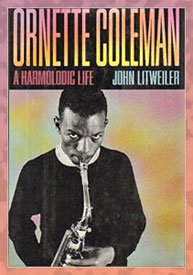 that contributed so greatly to the very nature of his music, and why, at times, it could make perfect sense, and then, no sense at all. Perhaps he was dyslexic before there was such a thing? Perhaps, he had attention deficit disorder before there was such a thing? Sometimes, when you hear his music, it can seem as though he is jumping from one place to another so quickly, without preparation or announcement. Or you hear that one moment, he's in one key, and then, miraculously, he is suddenly in another. It is, and it was so different - small wonder that few could 'understand' or grasp where it was all coming from. And yet, there were those in his groups, who connected with it and went along with him on his miraculous journey that has let behind an incredibly rich legacy of brilliant compositions and ground-breaking improvising. His music, his groups changed our musical world, and altered our thinking about it forever, and, for the better. I am eternally grateful that I was alive as all of this was beginning. that contributed so greatly to the very nature of his music, and why, at times, it could make perfect sense, and then, no sense at all. Perhaps he was dyslexic before there was such a thing? Perhaps, he had attention deficit disorder before there was such a thing? Sometimes, when you hear his music, it can seem as though he is jumping from one place to another so quickly, without preparation or announcement. Or you hear that one moment, he's in one key, and then, miraculously, he is suddenly in another. It is, and it was so different - small wonder that few could 'understand' or grasp where it was all coming from. And yet, there were those in his groups, who connected with it and went along with him on his miraculous journey that has let behind an incredibly rich legacy of brilliant compositions and ground-breaking improvising. His music, his groups changed our musical world, and altered our thinking about it forever, and, for the better. I am eternally grateful that I was alive as all of this was beginning.As of "PATCHWORK," I have now interpreted and arranged 12 of Ornette's compositions. And each time that I began to approach any one of them, it was with a kind of respect and reverence that I felt it deserved. At the same time, I always reminded myself that there is an element in his music that begs you to go your own way with it, that there is no one way, right or wrong, to approach what his music might make you feel. Can anyone really find something wrong with the David Sanborn/Marcus Miller collaboration on Ornette's "Ramblin'" from his "UPFRONT" album with the brilliant Steve Jordan on drums? You just have to free yourself of all previous notions of what a song is supposed to be, and run with how YOU hear it, and feel it. For me, it has been a great privilege to interpret some of Ornette's music in the way that I chose to do it. Here, "C. & D." becomes just such an example. I hope that you all find something within it to enjoy. But it all began with a great love for the song, and for his music.
[Photos: Ornette Coleman and Scott LaFaro @ The Village Vanguard 1961
Bob Mintzer Steve Khan @ Sear Sound by Richard Laird Marc Quiñones @ Sear Sound by Richard Laird] |